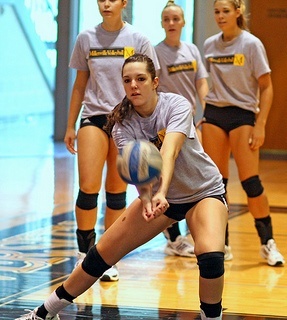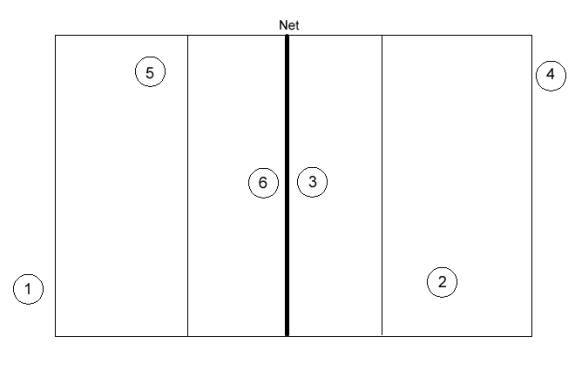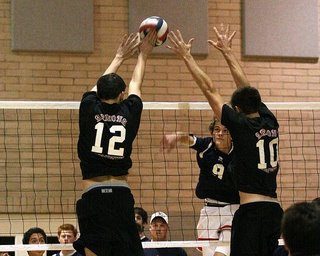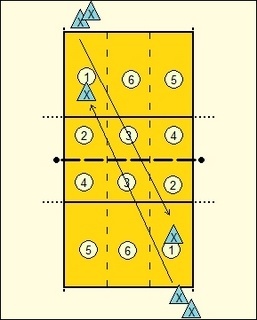These volleyball setting drills are designed to put the emphasis on training your setter and increasing their skills. Setters are one of the hardest positions to train for and these drills will help you do that. Add these drills as needed to your volleyball practice plan and watch the results!
Setting Triangle Drill
The first of the volleyball setting drills is the Setting Triangle Drill. It works like this:
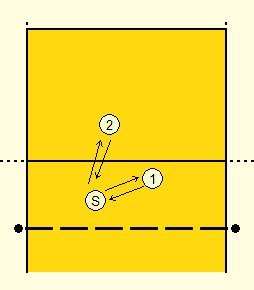 Setting Triangle Drill
Setting Triangle Drill
1. Player 1 and player 2 each have a ball.
2. Player 1 tosses the ball to the setter.
3. Setter sets it back to player 1.
4. Player 2 immediate tosses the next ball to the setter.
5. Setter sets it back to player 2.
Points of Emphasis:
1. Quick feet from setter
2. Transition between setting targets
3. Proper follow-through on the set
4. Proper footwork, balance, and accuracy
Ball Bettering Drill
Here is how this drill works:
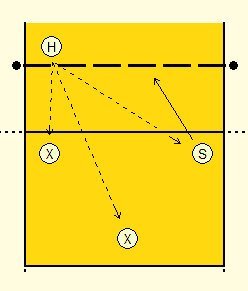 Ball Bettering Drill
Ball Bettering Drill
1. Coach will be tossing the ball to various parts of the court.
2. The setter will move to the ball in setting position.
3. They will set the ball to either hitter.
4. Repeat as necessary.
Points of Emphasis
1. Not every pass in a game will be perfect. This drill forces the setter to make the best of a bad pass.
2. Focus should be on giving the hitter a set that is hittable.
3. Setter should square up to the setting target prior to setting the ball.
4. The set should be better than the pass they had to work with.
5. You can add a variation where there are blockers for the hitters so that they also practice hitting sets from a bad pass around blockers.
Setter Defense Drill
The last of the volleyball setting drills that I am going to cover focuses more on how the setter plays defense than how they set. Many setters are pretty good at running the offense and delivering the ball. One of the skills that makes them a premier setter and sets them apart is how they play defense and how they transition from defense to offense.
Here is how it works:
 Setter Defense Drill
Setter Defense Drill
1. The hitter has the ball and will hit the ball to their choice of the three defensive targets.
2. The setter will read the hitter to determine if they need to play defense (dig the ball) or move to position to set the ball.
3. If the ball is hit to the setter, they will pass the ball and say “setter out”. In a game situation, this notifies the team that another player needs to set the ball.
4. If the ball is hit to someone else, the setter moves to their setting position.
Points of Emphasis
1. This drill is all about teaching the setter to be disciplined and play defense first before running the offense.
2. Get in proper digging position.
3. If the ball is not hit at the setter, the setter must transition quickly to setter position.

